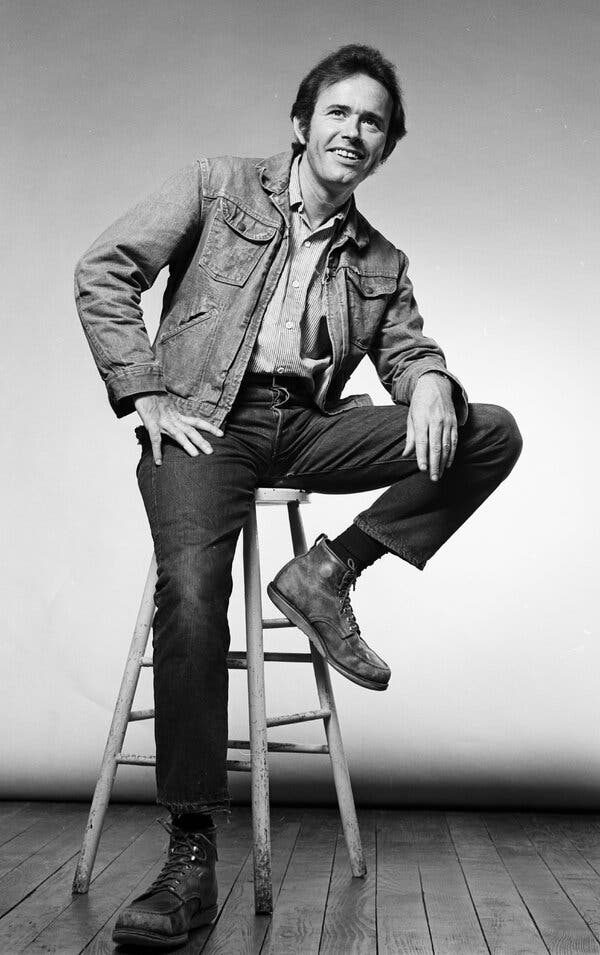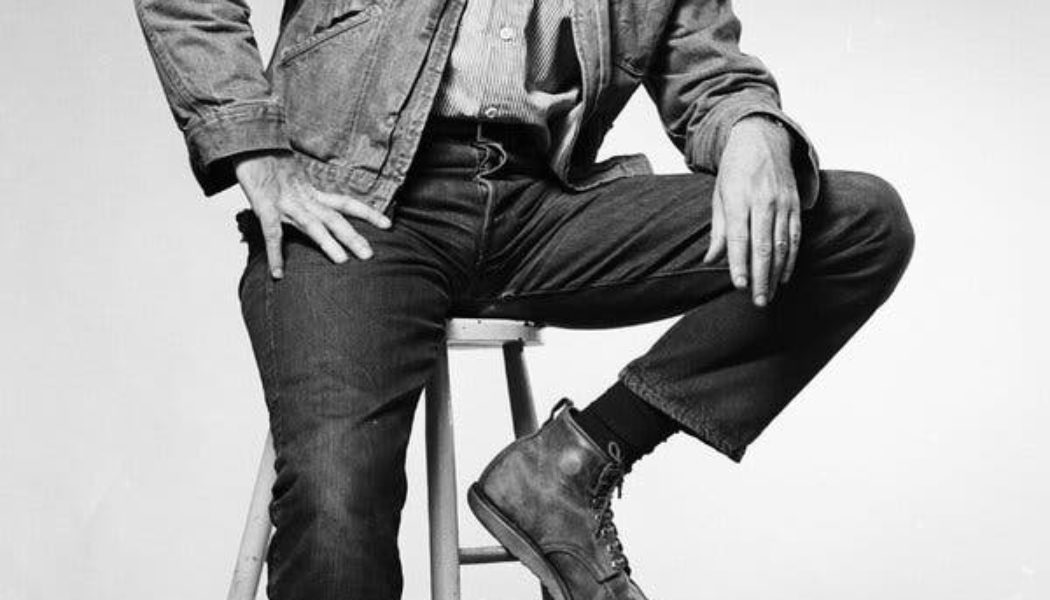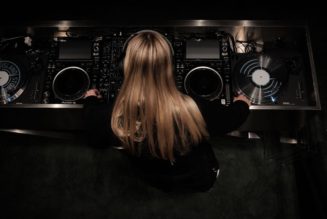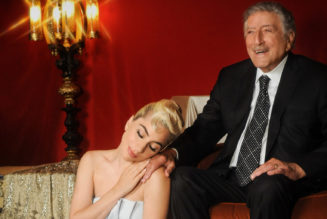David Del Tredici, a Pulitzer Prize-winning American composer who began as an experimentalist but became best known for a midcareer shift toward a style that came to be called the New Romanticism, which yielded a series of rich-hued, tuneful pieces based on Lewis Carroll’s “Alice” stories, died on Saturday at his home in Manhattan. He was 86.
The pianist Marc Peloquin, a longtime friend and collaborator and the executor of Mr. Del Tredici’s estate, said the cause was Parkinson’s disease.
Flamboyant and gregarious, Mr. Del Tredici cultivated a reputation as a beloved scamp who did what he wanted. But he also had a gift for explaining his musical goals and how he had settled upon them. And he was frank about his personal life and his demons — alcoholism, for one. If the composer George Antheil had not already laid claim to the phrase “Bad Boy of Music,” Mr. Del Tredici could easily have adopted it himself.

Starting as a teenager, when he decided to set aside a promising career as a pianist in favor of composition because of the way a piano teacher had spoken harshly to him, Mr. Del Tredici regularly redefined himself. He often abandoned approaches that had brought him success and went against the grain of the classical music world. Typically, he would face opposition at first, only to see his innovations win over listeners and other composers.
He established himself as a young star of the experimental world with a series of settings of the work of James Joyce — most notably “Night-Conjure Verse” (1965) and “Syzygy” (1966), both of which showed how vividly angular, athletic vocal lines and pointillistic instrumental writing could magnify a work’s emotional depths.
But his fascination with Lewis Carroll’s “Alice” books led him toward the lushness of a neo-Romanticism that erupted with full force in “Final Alice” (1975), a 70-minute score for soprano and a huge orchestra that was packed with hummable melodies, as well as just enough chaotic brashness to keep its late-20th-century provenance clear.
Some atonalists regarded “Final Alice” as a betrayal. But a PBS broadcast and a recording by the soprano Barbara Hendricks, with Georg Solti conducting the Chicago Symphony Orchestra (which had commissioned the work), brought “Final Alice” to a large audience that embraced it enthusiastically — as did many musicians.
While writing “Final Alice,” Mr. Del Tredici could imagine two outcomes, he told The New York Times in 1980. “One was that when the orchestra was 20 minutes into the piece, everybody would say it was endless and walk out,” he said. “The other was that when it was over, they would stand up and cheer. I spent most of my time with the first scenario. But in fact, at the premiere, indeed they stood up and cheered.”
Still, though he enjoyed the attention that the “Alice” works brought him — another installment, “In Memory of a Summer Day,” was awarded the Pulitzer Prize in 1980 — and happily acknowledged his role in creating a musical style, he grew restless in the 1990s. He turned to reclaiming some of the dissonance and grittiness of his early works, though without abandoning the melodic richness that had become one of his hallmarks.
Around this time, he also shifted his attention to vocal works about gay sexuality, a subject he felt had been ignored by classical composers. Some of these works — among them “Gay Life” (2001), for baritone and orchestra — were performed frequently. But others ran into censorship.
When “Wondrous the Merge” (2001), a cycle about the love between a male professor and a male student, had its premiere at the Great Lakes Chamber Music Festival in Michigan in 2003, a section was deleted because the festival considered it too explicit. And his “My Favorite Penis Poems” (2002) was rejected by several musical organizations before Symphony Space in New York City presented its premiere in 2008.
“For me, like any composer,” Mr. Del Tredici told American Public Media in 2002 “if you feel like you’re going in a place that has not been gone, it’s very exciting. I think that when I set a text that’s shocking, I’m thrilled. You can set love poems, but you can’t set sex poems, or gay poetry. It’s still not OK. As an out gay composer, I kind of mourn that fact.”
David Del Tredici was born on March 16, 1937, in Cloverdale, Calif., about 85 miles north of San Francisco. His father, Walter, was an accountant, and his mother, Helen Ann Wagele Del Tredici, was a teacher.
David began his piano studies when he was 11 and was 16 when he gave his first public performance, in San Francisco in 1954. By the time he was 18, he had won a handful of scholarships and awards, including the $5,000 John E. Kimber Prize, in 1955, which covered his piano studies for several years.
When he enrolled at the University of California, Berkeley, in 1955, he still regarded himself principally as a pianist. He did not think about becoming a composer until the summer of 1958, when he went to the Aspen Music Festival and School to study with the pianist Leonard Shure.
“He yelled at me and was very severe, and I didn’t realize, coming from California, that all he really was, was a New Yorker,” Mr. Del Tredici told American Public Media in 2002. “I was so unhappy with that that I thought, ‘I have a whole summer here, what can I do to have fun with music that’s no longer playing the piano?’ I thought I could either sing or I could compose. So I started to write a piece.”
When he completed that work, “Soliloquy,” a friend suggested that he bring it to Darius Milhaud, the festival’s composer in residence. Mr. Milhaud was encouraging, and when Mr. Del Tredici returned to Berkeley, he enrolled in a composition class taught by Seymour Shifrin. Among his classmates there were La Monte Young, Terry Riley and Pauline Oliveros, all of whom would become founders of the Minimalist style.
On his graduation in 1959, Mr. Del Tredici continued his studies with Earl Kim and Roger Sessions at Princeton University, and he was strongly drawn to the dissonant, intensely chromatic style that prevailed among the composers there. He later pointed out that he had never been composer of 12-tone music, the radical departure from traditional tonality pioneered by Arnold Schoenberg.
“I used serial techniques,” he told The Times in 1980, “but I always liked to have some overriding expressive element.”
Shortly after graduating from Princeton, he sent a tape of his first set of James Joyce settings and his “Fantasy Pieces” for piano to Aaron Copland. Copland became a mentor and helped get him a commission from the Tanglewood Music Festival. There, he met an ideal interpreter, the soprano Phyllis Bryn-Julson, who was able to make difficult music sound expressive, if not necessarily easy. Mr. Del Tredici composed several settings of Joyce texts for her during his visits to Tanglewood, among them “Night Conjure-Verse” and “Syzygy.”
After he exhausted his passion for Joyce texts, he turned to Lewis Carroll’s “Alice’s Adventures in Wonderland,” though he feared at first that the material might be too slight. But he reconsidered after reading Martin Gardner’s “Annotated Alice,” a compilation of Carroll’s writings with notes showing the degree to which Carroll’s poetry parodied Victorian ballads. There was a transgressive element that interested Mr. Del Tredici.
“Gradually,” he told Bomb magazine in 1997, “I was drawn into the story behind the story — why Lewis Carroll wrote the book and for whom. This eventually led me to his infatuation with Alice Pleasance Liddell. Lewis Carroll adored little girls. And this was not without its sexual aspect.”
The early works in the “Alice” series — including “Pop-Pourri” (1968), “An Alice Symphony” (1969), “Adventures Underground” (1971) and “Vintage Alice” (1972) — continued to draw on the dissonance and angularity of Mr. Del Tredici’s early style. But lyricism would become increasingly important, as would an expansive scoring style, in which instruments more typically heard in pop and folk ensembles — electric guitar and bass, saxophones, mandolin, banjo and accordion — were grafted onto standard orchestras.
With “Final Alice,” Mr. Del Tredici decided that he needed a new approach, one that would capture the tenderness of Carroll’s feelings for his young friend, and he returned to an almost Brahmsian Romanticism.
“When I got to ‘Final Alice,’” he told The Times in 1980, “there were long sections that were completely tonal, and I thought, ‘Well, the wrong notes will come later,’ but they never did.’ About halfway through, I thought, ‘Oh, my God, if I just leave it like this, my colleagues will think I’m crazy.’ But then I thought, ‘What else can I do? If nothing else occurs to me, I can’t go against my instincts.’ But I was terrified my colleagues would think I was an idiot.”
Some modernists looked askance at the work. But Harold C. Schonberg, the chief classical music critic of The New York Times, found it heartening. After a Carnegie Hall performance by the Philadelphia Orchestra in 1978, he wrote: “‘Final Alice’ may not be a profound score, and some of it is kitsch, but it does have life, imagination and — mirabile dictu! — audience appeal. People were coming out of Carnegie Hall humming and whistling the ‘Alice’ theme.”
Mr. Del Tredici continued setting Carroll texts and writing compositions inspired by them into the early 1990s. In 1988, he began a two-year term as composer-in-residence at the New York Philharmonic.
The success of his “Alice” works had a dark side, however. Mr. Del Tredici acknowledged that he had always had an addictive personality, which he had channeled into his work, but he said he realized in the early 1990s that he had begun spinning out of control shortly after he won the Pulitzer. He began drinking excessively (he was “a runaway drunk,” he said), and he endured a series of personal crises, including the death of his partner, Paul Arcomano, from AIDS in 1993. In 1996, he checked into Body Electric, an organization that holds weekend healing retreats for gay men. (There was no immediate information on his survivors.)
Mr. Del Tredici taught composition throughout his career, first at Harvard University, from 1966 to 1972 — one of his students there was John Adams — and then at Boston University, from 1973 to 1984. He also taught at Yale, in 1999 and 2000, but his longest association was with the City College of New York, a position he had held since 1984.
“Young composers now who come to me to study feel they can do anything,” he told American Public Media in 2002. “They are all very different. When I was a student, you had to do pretty much atonal or you weren’t acceptable. There was a lot of pressure — unspoken, like so many effective pressures, but it operated. So this is a better time, and I think it’s paying off.”









